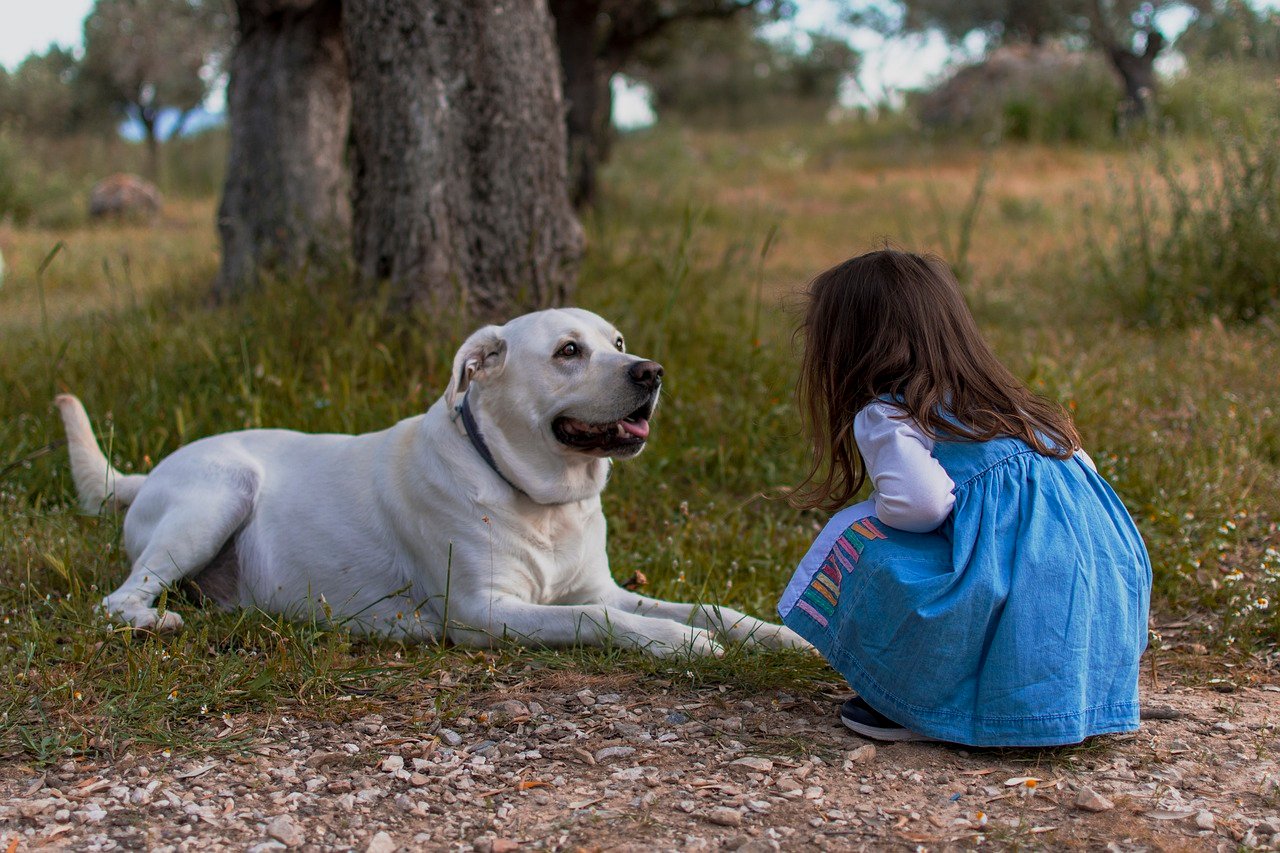Letting your dog sleep in your bed is a hot topic among pet parents—and it really comes down to lifestyle and personal preference. On the plus side, many people find that co-sleeping with their pup boosts feelings of comfort, security, and emotional bonding. Dogs love being close to their humans, and sharing a bed can reinforce that trust. But it’s not for everyone—light sleepers, allergy sufferers, or those with restless dogs might struggle with disrupted sleep. There’s also the issue of boundaries and training, especially with younger or anxious dogs. Ultimately, it’s about finding what works best for both you and your furry friend. Just be sure it’s a choice made with love, consistency, and a touch of common sense!
The Emotional Bond: Why We Love Sharing Our Beds

For many dog owners, bedtime means sharing the covers with a furry companion curled up at their feet—or right in the middle of the bed. While letting your dog sleep with you can offer comfort, warmth, and a deeper bond, it also raises questions about hygiene, sleep quality, and behavioral boundaries. The decision isn’t just about preference; it touches on psychology, routine, and even your dog’s emotional well-being.
For many people, the simple act of snuggling up with their dog at night brings a sense of peace and happiness that’s hard to describe. Dogs are more than pets—they’re companions, confidants, and loyal friends. Sharing a bed can feel like a warm hug at the end of a tough day, reminding us we’re not alone. This closeness often deepens the emotional bond between owner and dog, creating a feeling of safety and comfort on both sides. People who let their dogs sleep with them often say it helps them relax and drift off to sleep faster. In fact, the gentle rhythm of a dog’s breathing can be as calming as a lullaby. For dogs, being close to their owner can reduce anxiety and reinforce their sense of belonging. There’s something undeniably heartwarming about waking up to a wagging tail and a loving face beside you.
Benefits for Humans: Comfort, Security, and Warmth
One of the biggest perks of letting your dog sleep in your bed is the sheer comfort it provides. Dogs are natural heat sources, and their presence can make even the coldest night feel cozy. For those who live alone, having a dog nearby offers a sense of security—many people feel safer knowing their loyal pet is alert to any unusual noises or movement.
Some studies suggest that the companionship of a pet can reduce stress, lower blood pressure, and even help ease symptoms of depression or loneliness. Dogs have an uncanny ability to sense when we’re feeling blue and offer comfort simply by being there. The reassuring weight of a dog at your feet or curled up by your side can be deeply grounding, helping some people sleep more soundly and wake up feeling more refreshed.
Drawbacks for Humans: Sleep Disruption and Allergies
Despite the joys, there are real downsides to sharing your bed with a dog. Dogs, like people, can be restless sleepers—they may toss, turn, snore, or even hog the covers! This can lead to broken sleep cycles or trouble falling back asleep after being disturbed. For light sleepers, even a gentle nudge or the sound of paws scratching can be enough to disrupt a good night’s rest. Another concern is allergies.
Even if you’re not allergic to dogs, their fur, dander, and the pollen or dirt they bring in from outside can trigger sneezing or congestion. Over time, these nightly interruptions can add up, leaving you feeling groggy or irritable during the day. For people with sensitive skin, sharing bedding with a dog can sometimes lead to rashes or itching, especially if your dog spends time outdoors.
Health and Hygiene: What You Need to Know
Bringing your dog into your bed means sharing more than just cuddles—you’re also sharing germs, dirt, and sometimes even parasites. Dogs can carry bacteria on their fur and paws, and although most of these microbes are harmless to healthy humans, there’s always a small risk of getting sick.
Fleas and ticks are another concern, especially if your dog isn’t on regular preventative medications. It’s important to wash bedding frequently and keep your dog clean and well-groomed. Some experts recommend wiping your dog’s paws before bed or even designating a specific blanket for them to sleep on. If you or a family member has a compromised immune system, it may be wise to think twice before inviting your pup under the covers.
The Dog’s Perspective: Comfort and Attachment
From your dog’s point of view, sleeping close to you is the ultimate sign of trust and affection. Dogs are pack animals by nature, and being near their favorite human helps them feel safe and secure. For puppies, sharing the bed can ease separation anxiety and help them adjust to life away from their litter.
Adult dogs often see the bed as a place of privilege—being allowed up is a reward and a way to stay connected to their owner. Many dogs will instinctively seek out the spot closest to their person, pressing against your side or resting their head on your feet. This closeness supports their emotional health and can help reduce stress, especially during thunderstorms or fireworks.
Potential Behavior Issues: Boundaries and Dominance
While sharing your bed can strengthen your bond, it may also blur important boundaries for some dogs. Certain breeds or personalities may interpret access to the bed as a sign they’re in charge, which can lead to behavior problems over time. For example, a dog that becomes possessive of the bed might growl or snap if asked to move.
Setting clear rules—like inviting your dog up only when you say so—can help reinforce your role as the leader. Consistency is key: if you sometimes allow bed-sharing and other times don’t, your dog may become confused or anxious. If your dog already shows signs of dominance or aggression, it may be best to establish a separate sleeping space to avoid reinforcing unwanted behavior.
Impact on Relationships: Couples and Canines
Adding a dog to the bed can change the dynamic between couples, sometimes in unexpected ways. For some, the shared love of a pet brings them closer together and creates a sense of family. For others, a dog’s presence can lead to less intimacy, disrupted sleep, or even jealousy if one partner feels left out.
Open communication is crucial—talk with your partner about boundaries, preferences, and any issues that come up. Some couples find creative solutions, like having the dog sleep at the foot of the bed or in a crate beside the bed. Remember, your dog’s happiness matters, but so does your own comfort and the health of your relationship.
Children and Dogs: Safety Considerations

If you have children, deciding whether to let the family dog sleep in bed is a big decision. While it can be heartwarming to see a child and dog snuggled up together, there are safety concerns to keep in mind. Small children may not recognize when a dog is uncomfortable or needs space, which can lead to accidental bites or scratches.
Dogs, especially larger breeds, can unintentionally smother or roll over a sleeping child. It’s generally safer to encourage children and dogs to bond during waking hours and establish separate sleeping spaces. For older kids who are responsible and understand dog behavior, supervised bed-sharing may be an option, but always prioritize safety first.
Alternatives to Bed-Sharing: Finding a Middle Ground
If you love the idea of closeness but worry about sleep quality or hygiene, there are plenty of ways to compromise. Many dog owners opt for a dog bed or crate placed right beside their own bed, so their pet is near but not under the covers. Others use pet steps to allow older dogs to get on and off the bed safely.
Some designate a special blanket or part of the bed just for the dog, creating a clear boundary while still allowing for cuddles. You might also train your dog to climb up for morning snuggles but sleep elsewhere during the night. The key is to find a routine that works for both you and your dog—and to stick with it.
What Experts and Research Say About Co-Sleeping with Dogs
Veterinarians and animal behaviorists have a range of opinions about dogs sleeping in beds. Some experts argue that, for healthy adults and well-behaved dogs, bed-sharing is generally safe and can even have psychological benefits. Others point to the risks, especially for people with allergies, compromised immune systems, or sleep disorders.
Studies show mixed results: while some people report better sleep with their dog nearby, others experience more restlessness or waking up at night. Ultimately, the decision comes down to your lifestyle, your dog’s temperament, and your personal preferences. If you’re unsure, consult with your vet or a certified trainer to weigh the pros and cons for your unique situation.
Whether you choose to share your bed with your dog or set up cozy quarters elsewhere, the decision ultimately comes down to what works best for your lifestyle, sleep quality, and relationship with your pet. Co-sleeping can deepen bonds and provide emotional comfort, but it also requires careful consideration of boundaries, hygiene, and training. By weighing the pros and cons through the lens of both practicality and psychology, you can create a sleeping arrangement that supports both your well-being and your dog’s. Whatever you decide, consistency and communication—yes, even with your dog—are key.





